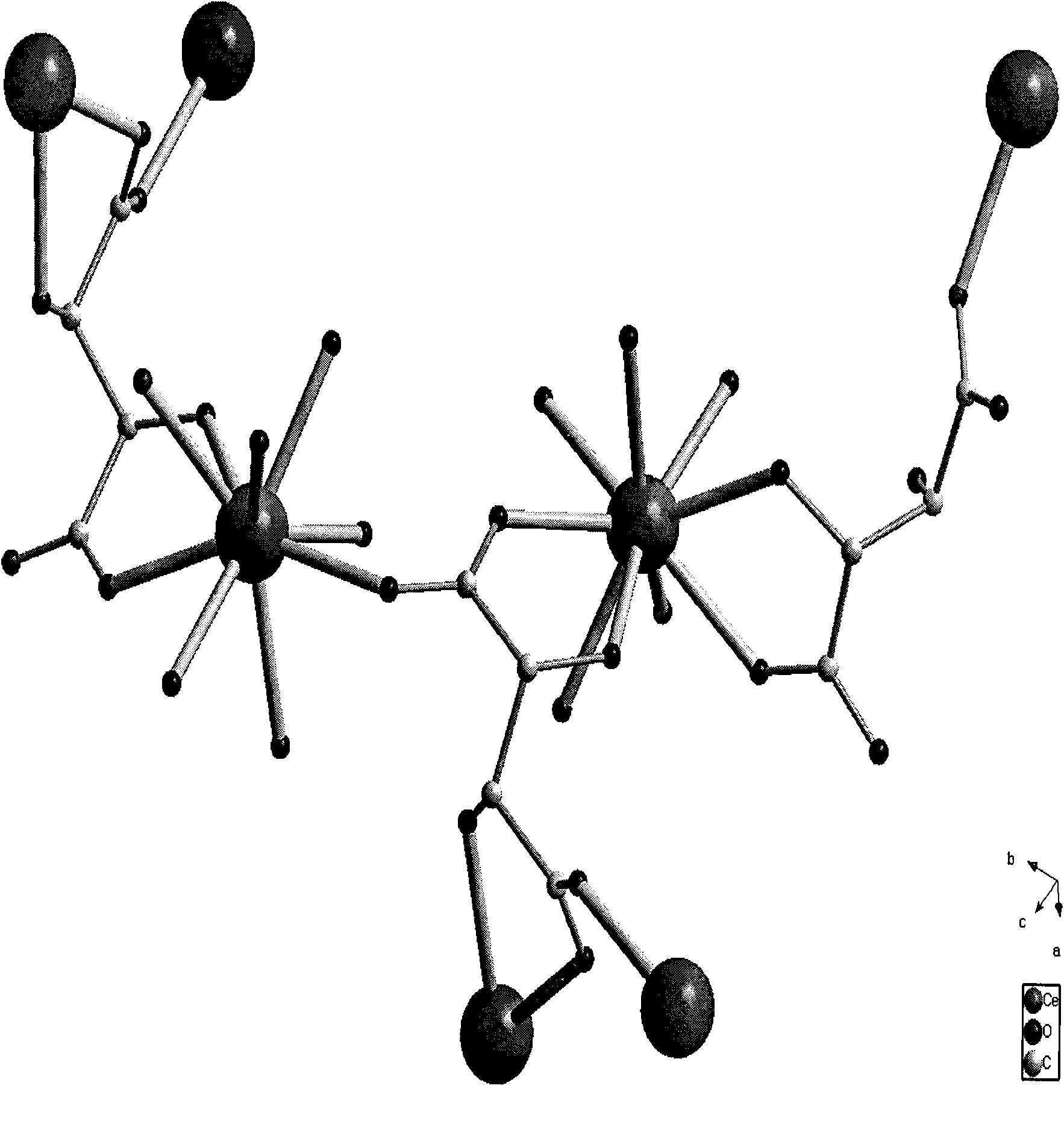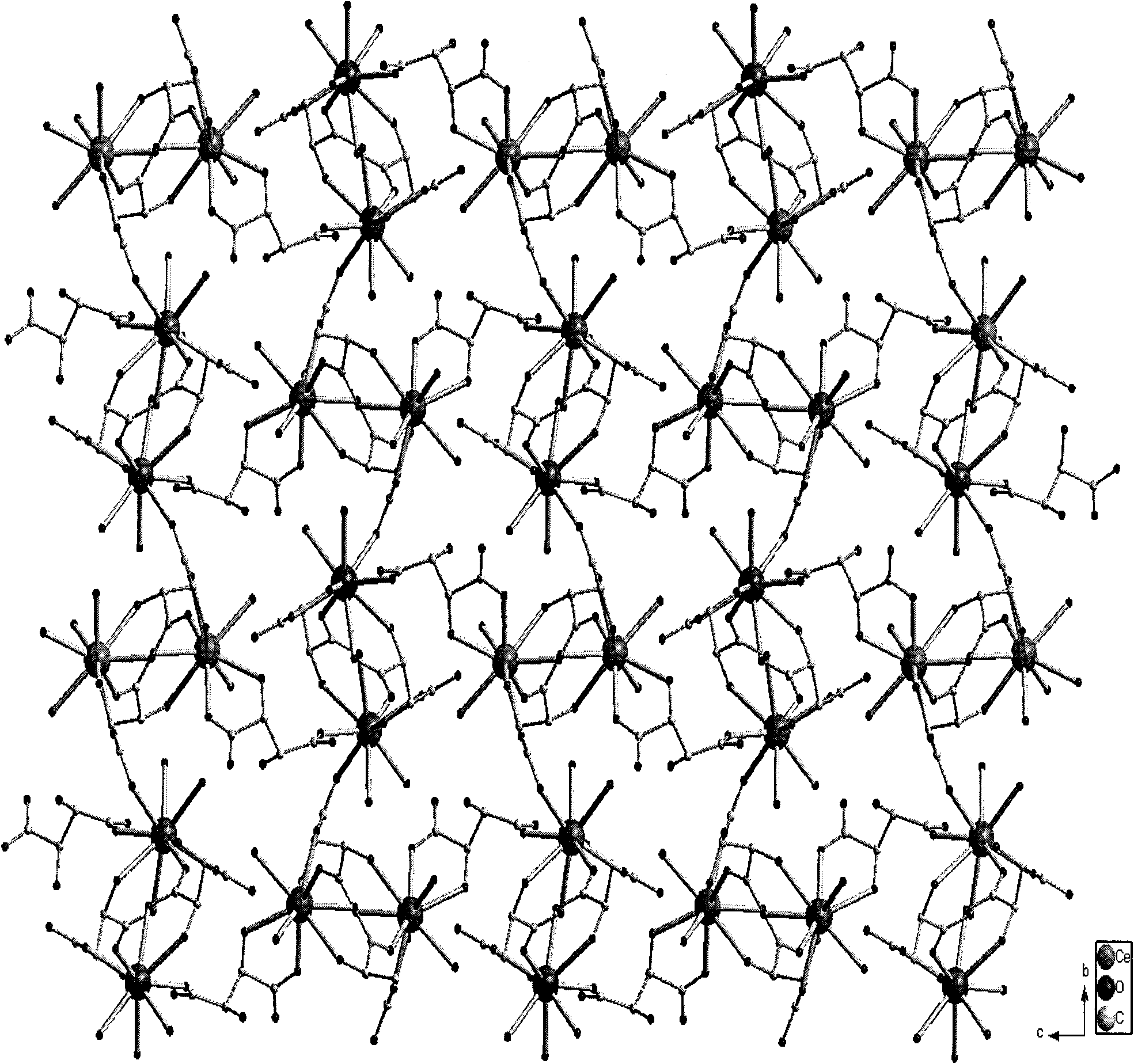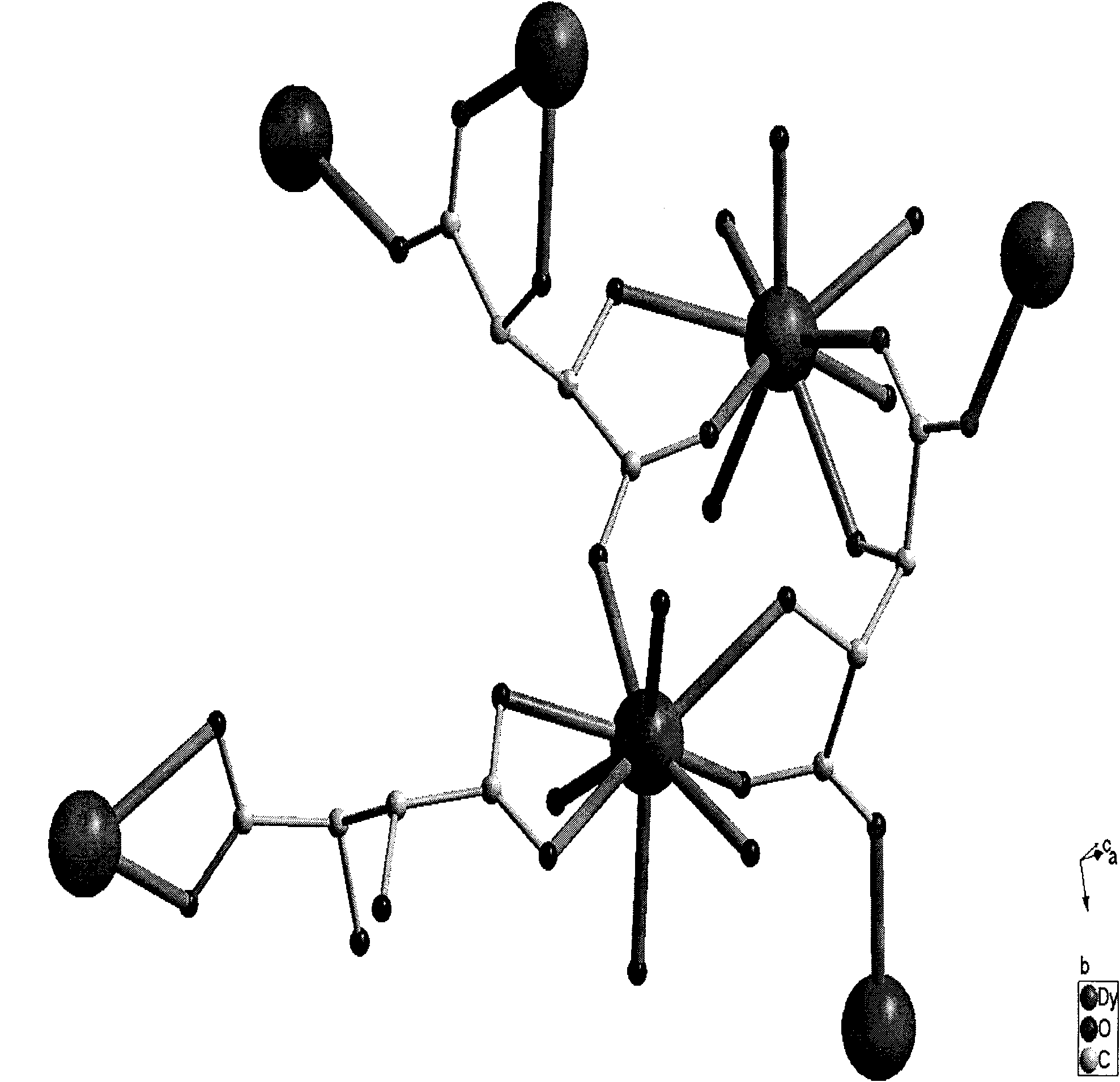Solventhermal synthesis method for L-tartaric acid rare earth complexes
A rare earth complex, tartaric acid technology, applied in the preparation of organic compounds, chemical instruments and methods, carboxylate preparation and other directions, can solve the problem that the rare earth complex of tartrate has not been reported in the literature, etc., and achieves convenient operation, concise process flow, The effect of good thermal stability
- Summary
- Abstract
- Description
- Claims
- Application Information
AI Technical Summary
Problems solved by technology
Method used
Image
Examples
Embodiment 1
[0038] Put 0.3g of cerium oxide and 0.3g of L-tartaric acid into a 20ml reaction kettle, add 2ml of ethanol, and mix evenly with 16ml of water.
[0039] Crystallize at a constant temperature of 140°C for 3 days and then cool to room temperature at a rate of 5°C per hour to obtain millimeter-sized cerium L-tartrate crystals. The molecular formula of the synthesized product L-cerium tartrate is: [Ce 2 (L-TAR) 3 (H 2 O) 4 ]·H 2 O, the space group is P2(1)2(1)2(1), and the unit cell parameter is a=7.9273(3) b=15.5871(6) c=17.5573(6) α=β=γ=90°, V=2169.44(14) Z=4, Dc=2.494g / cm 3 , which has a structure like figure 1 , figure 2 As shown, under the excitation of excitation light with a wavelength of 250nm, fluorescence with a wavelength of 355nm is emitted.
Embodiment 2
[0041] Put 0.3g of dysprosium oxide and 0.3g of L-tartaric acid into a 20ml reaction kettle, add 2ml of ethanol and 16ml of water and mix evenly. Crystallize at a constant temperature of 140°C for 3 days and then cool to room temperature at a rate of 5°C per hour to obtain millimeter-sized L-dysprosium tartrate complex crystals. The molecular formula of the synthesized product L-dysprosium tartrate is: [Dy 2 (L-TAR) 3 (H 2 O) 2 ]·3H 2 O, the space group is P1, and the unit cell parameter is a=5.9841(2) b=7.3983(2) c=13.2347(5) α=102.7500(10)°, β=101.669(2)°, γ=90.682(2)°, V=558.69(3) Z=1, Dc=2.554g / cm 3 , which has a structure like image 3 , Figure 4 As shown, under the excitation of the excitation light with the wavelength of 265nm, the fluorescence with the wavelength of 480nm can be emitted.
Embodiment 3
[0043] Put 0.3g of europium oxide and 0.3g of L-tartaric acid into a 20ml reaction kettle, add 2ml of ethanol and 16ml of water and mix evenly. Crystallize at a constant temperature of 140°C for 3 days and then cool down to room temperature at a rate of 5°C per hour to obtain millimeter-sized europium-tartrate complex crystals. In the method for solvothermally synthesizing chiral microporous fluorescent material L-europium tartrate of the present invention, L-europium tartrate, it is characterized in that, the molecular formula of the product L-europium tartrate synthesized is: [Eu 2 (L-TAR) 3 (H 2 O) 2 ]·3H 2 O, the space group is P1, and the unit cell parameter is a=6.0211(1) b=7.4575(1) c=13.2224(2) α=102.666(1)°, β=101.384(1)°, γ=90.894(1)°, V=566.795(15) Z=1, Dc=2.456g / cm3 , which has a structure like Figure 5 , Figure 6 As shown, under the excitation of the excitation light with the wavelength of 260mm, the fluorescence with the wavelength of 560nm can be ...
PUM
 Login to View More
Login to View More Abstract
Description
Claims
Application Information
 Login to View More
Login to View More - R&D
- Intellectual Property
- Life Sciences
- Materials
- Tech Scout
- Unparalleled Data Quality
- Higher Quality Content
- 60% Fewer Hallucinations
Browse by: Latest US Patents, China's latest patents, Technical Efficacy Thesaurus, Application Domain, Technology Topic, Popular Technical Reports.
© 2025 PatSnap. All rights reserved.Legal|Privacy policy|Modern Slavery Act Transparency Statement|Sitemap|About US| Contact US: help@patsnap.com



